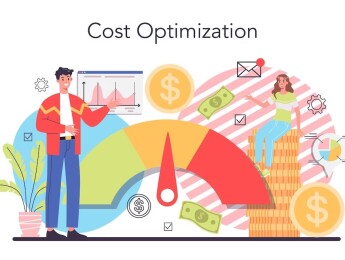- Table of Contents
- Introduction
- Integrating Open Banking into Your Business
- Ways of Using AI in Open Banking
- Enhanced Data Analytics
- Fraud Detection and Prevention
- Chatbots and Virtual Assistants
- Credit Scoring and Loan Underwriting
- Investment Management
- Advantages of Utilising AI in Open Banking
- Improved Customer Experience
- Enhanced Security
- Cost Efficiency
- Data-Driven Decision Making
- Accelerated Innovation
- Real-World Examples of AI in Banking
- Steps to Become an AI-First Bank
- 1- Cultivate an AI-First Culture
- 2- Invest in AI Talent
- 3- Establish a Robust Data Infrastructure
- 4- Collaborate with Fintech Startups
- 5- Prioritise Ethical AI Practices
- 6- Pilot and Scale AI Initiatives
- 7- Monitor and Optimise AI Performance
- The Role of Regulation in Shaping Open Banking
- The Future of AI in Open Banking: Quantum Computing
- AI and Financial Inclusion in Open Banking
- Conclusion
Introduction
The financial world is undergoing a revolutionary transformation, and at the heart of this change lies Open Banking - an innovative concept that promises to reshape the way we manage our finances. With the advent of Open Banking, traditional financial institutions are embracing an ecosystem of collaboration, driving greater transparency and empowering customers like never before. This shift has opened doors to a plethora of opportunities, and one technology that is poised to play a key role in this landscape is Artificial Intelligence (AI). By harnessing the power of AI, banks can unlock new levels of efficiency, security, and personalisation, redefining the banking experience for millions of individuals and businesses worldwide. In this blog post, we will explore the marriage of AI and Open Banking, and how this union is set to revolutionise the financial industry as we know it.
Integrating Open Banking into Your Business
Integrating Open Banking into your business can unlock a multitude of opportunities for growth and innovation. By embracing this approach, financial institutions can become more agile, improve customer engagement, and foster collaboration with fintech startups. Open Banking enables seamless sharing of data between various platforms and allows users to manage their finances holistically through a single interface. This integration, however, brings forth a challenge - the sheer volume of data that needs to be processed and analysed in real-time. This is where Artificial Intelligence (AI) plays a pivotal role.
Table 1: Benefits of Integrating Open Banking
Benefit | Description |
Enhanced Customer Engagement | Open Banking allows for a more holistic view of customer finances, leading to better engagement. |
Collaboration with Fintech | Financial institutions can collaborate with fintech startups to offer innovative solutions. |
Real-time Data Processing | AI helps in processing and analysing vast amounts of real-time data for actionable insights. |
Ways of Using AI in Open Banking
As we delve deeper into the world of Open Banking and its potential to reshape the financial landscape, let's now explore the various ways in which Artificial Intelligence can be harnessed to unlock its full potential.
Enhanced Data Analytics
AI's role in data analytics within Open Banking is transformative. Traditional data analysis methods often struggle to keep up with the sheer volume, velocity, and variety of financial data generated in the Open Banking ecosystem. AI, on the other hand, excels in handling these data challenges.
- Real-time Insights:AI algorithms can rapidly process vast amounts of financial data in real-time, providing financial institutions with up-to-the-minute insights into customer behaviour, market trends, and transaction patterns. This is invaluable for making timely decisions and offering relevant services.
- Personalisation:AI's ability to analyse and correlate data from multiple sources allows banks to create highly personalised financial products and services. For instance, by examining a customer's spending habits, investment history, and life events, AI can recommend tailored investment portfolios or suggest suitable loan options.
- Risk Management:AI-powered data analytics can identify potential risks and opportunities. For example, by analysing market trends and assessing the creditworthiness of borrowers, banks can make more informed lending decisions, reducing the risk of loan defaults.
Fraud Detection and Prevention
One of the most critical concerns in Open Banking is maintaining the security and trust of customers. AI plays a pivotal role in enhancing fraud detection and prevention:
- Anomaly Detection:AI algorithms can continuously monitor transactions and user behaviour to detect unusual activities or patterns that may indicate fraudulent behaviour. For example, if a customer's account shows a sudden spike in international transactions when they typically conduct local transactions, AI can flag this as suspicious.
- Machine Learning Models: AI-driven machine learning models can adapt and evolve to recognise new and previously unseen fraud patterns. This adaptability is crucial in a constantly changing landscape of financial fraud.
- Real-time Response: AI can respond to potential fraud in real-time, triggering alerts and security measures to protect both the customer and the bank's assets. Immediate action can be taken to block suspicious transactions or notify customers of potentially fraudulent activities.
Chatbots and Virtual Assistants
AI-driven chatbots and virtual assistants are revolutionising customer service in banking:
- 24/7 Availability:These virtual entities are available round-the-clock, providing customers with instant support and information. This not only improves customer satisfaction but also reduces operational costs associated with maintaining human staff for extended hours.
- Conversational Interaction: AI chatbots are designed to engage with customers in natural language, offering a human-like interaction. This enhances the user experience by making interactions more intuitive and comfortable.
- Transaction Assistance: Beyond answering inquiries, AI chatbots can also assist customers in conducting financial transactions, such as fund transfers, bill payments, and balance inquiries. This level of automation streamlines processes and reduces the need for customers to visit physical bank branches.
- Data Access:AI-powered virtual assistants can access and provide account information and transaction history, empowering customers to manage their finances conveniently.
Credit Scoring and Loan Underwriting
AI's impact on credit scoring and loan underwriting processes is significant:
- Broader Data Points:Traditional credit scoring models primarily rely on credit history. AI can incorporate a more extensive range of data points, such as social media activity, online shopping behaviour, and even smartphone usage patterns. This enables financial institutions to assess credit risk more accurately, even for individuals with limited or no credit history.
- Predictive Analytics:AI leverages predictive analytics to assess the likelihood of loan repayment based on a wide array of data. This results in more precise credit assessments, reducing the risk of offering loans to customers who may default.
- Speed and Efficiency: AI-driven credit scoring and underwriting can process loan applications much faster than manual methods. This not only improves the customer experience but also reduces administrative overhead for banks.
- Fairness and Objectivity:AI can help eliminate human biases in the lending process. By relying on data-driven insights, AI ensures that lending decisions are objective and fair, promoting financial inclusion.
Investment Management
AI-powered robo-advisors are transforming the investment landscape:
- Personalised Portfolios: Robo-advisors leverage AI to create highly personalised investment portfolios based on individual risk tolerance, financial goals, and market trends. This level of customisation was previously challenging to achieve at scale.
- Cost-Effective Investing: Robo-advisors offer cost-effective investment advice and portfolio management. They often charge lower fees than traditional human financial advisors, making investment services more accessible to a broader audience.
- Continuous Monitoring:AI-driven systems continuously monitor market conditions and portfolio performance. This allows for timely adjustments to investment strategies, maximising returns while managing risk.
- Accessibility: Robo-advisors can be accessed through mobile apps or web platforms, providing investors with easy access to their portfolios and investment insights at any time.
In summary, AI's application in Open Banking is multifaceted and extends across various domains, from data analytics and fraud prevention to customer service, credit assessment, and investment management. This technology not only enhances the efficiency and security of financial operations but also empowers customers by providing personalised services and access to financial resources. As AI continues to evolve, its role in shaping the future of Open Banking will undoubtedly become even more prominent.
Advantages of Utilising AI in Open Banking
As we have explored the transformative impact of AI in the realm of Open Banking, it is evident that the advantages it offers are multifaceted. Let's delve deeper into the various benefits financial institutions can harness by incorporating AI into their Open Banking strategies:
Improved Customer Experience
In the fast-paced digital age, customers demand seamless and personalised experiences from their financial institutions. AI enables banks to cater to these expectations by analysing vast amounts of customer data to gain valuable insights into their preferences, behaviours, and financial goals. With this knowledge, banks can offer personalised product recommendations, targeted marketing campaigns, and proactive financial advice, leading to a more engaging and customer-centric experience.
AI-driven chatbots and virtual assistants have also emerged as powerful tools in enhancing customer experience. These intelligent bots can handle routine inquiries, provide instant support, and guide customers through complex transactions, all while offering a human-like interaction. This not only reduces the waiting time for customers but also ensures round-the-clock support, leading to higher customer satisfaction levels.
Enhanced Security
One of the critical concerns in the era of Open Banking is the security of customer data. With the sharing of financial information across multiple platforms, the risk of data breaches and fraud increases. AI comes to the rescue with its advanced security capabilities.
AI-powered algorithms can analyse vast datasets in real-time, detecting any anomalies or suspicious activities. By continuously monitoring transactions and user behaviours, banks can quickly identify potential security threats and take immediate action to prevent fraud. This not only safeguards customer assets but also helps banks build trust and credibility in the Open Banking ecosystem.
Cost Efficiency
AI automation has the potential to significantly reduce operational costs for financial institutions. By automating repetitive and time-consuming tasks, such as data entry, document processing, and customer support, banks can free up their human workforce to focus on more strategic and value-added activities.
Moreover, AI-driven systems can optimise resource allocation, ensuring that resources are utilised efficiently and redundancies are minimised. The use of AI in risk assessment and credit underwriting processes also leads to more accurate decision-making, reducing the likelihood of bad loans and resulting in cost savings for banks.
Data-Driven Decision Making
Data is the lifeblood of Open Banking, and AI acts as a catalyst in extracting valuable insights from this data. By analysing historical and real-time data, AI algorithms can identify trends, patterns, and correlations that human analysts may overlook. This empowers banks to make data-driven decisions regarding product development, marketing strategies, and risk management.
For instance, AI can help banks create highly customised financial products based on individual customer preferences and needs. It can also optimise pricing models and marketing strategies by considering various factors like customer demographics, economic conditions, and market trends. Such data-driven decision-making not only enhances profitability but also ensures that banks remain competitive in a rapidly evolving financial landscape.
Accelerated Innovation
The fusion of AI and Open Banking has given rise to a wave of innovative financial services and products. AI-driven robo-advisors, for example, are disrupting the traditional wealth management industry by offering low-cost, automated investment advice tailored to individual investors' goals and risk profiles.
Furthermore, AI-powered credit scoring and loan underwriting systems are enabling banks to serve previously underserved segments, such as individuals with limited credit history or small businesses lacking substantial collateral. These innovations democratise access to financial services and contribute to a more inclusive banking ecosystem.
Real-World Examples of AI in Banking
Now that we have explored the numerous advantages of leveraging AI in Open Banking, let's turn our attention to real-world examples that showcase the practical applications and success stories of AI implementation in the financial industry.
JPMorgan Chase: The banking giant utilises AI algorithms to analyse market trends, generate trade recommendations, and optimise investment strategies for its clients. This has not only improved the bank's efficiency in managing investment portfolios but has also led to more informed investment decisions for its customers.
Bank of America:The bank employs the AI-powered chatbot, Erica, to assist customers with everyday banking tasks, provide financial insights, and answer inquiries in a conversational manner. Erica's ability to provide personalised financial advice has significantly enhanced the customer experience, leading to increased customer satisfaction.
Ant Financial: The financial services arm of Alibaba uses AI algorithms to assess creditworthiness for its popular product, Ant Credit Pay, which offers small loans to customers without traditional credit histories. By leveraging AI, Ant Financial has been able to expand its customer base and provide financial services to previously underserved individuals and businesses.
Steps to Become an AI-First Bank
Before concluding our exploration of AI in Open Banking, it's essential to understand the practical steps that financial institutions can take to embrace this technological revolution fully. Let's now shift our focus to the crucial steps to becoming an AI-First Bank and how this transformation can position them at the forefront of the ever-evolving financial landscape:
1- Cultivate an AI-First Culture
The first step towards becoming an AI-First Bank is to foster a culture that embraces innovation and AI adoption throughout the organisation. This involves creating awareness among employees about the transformative power of AI and how it can drive positive change across various departments, from customer service to risk management. Encourage a mindset of continuous learning and experimentation, where employees feel empowered to propose and implement AI-driven solutions.
2- Invest in AI Talent
Building a skilled and diverse AI team is essential to drive successful AI implementation. Hiring data scientists, machine learning engineers, and AI strategists will form the foundation of your institution's AI capabilities. However, it is equally crucial to empower existing employees with AI training programmes, enabling them to work effectively with AI technologies and understand their potential applications.
3- Establish a Robust Data Infrastructure
AI thrives on data, and having access to quality data is a prerequisite for AI success. Financial institutions must invest in a robust data infrastructure that ensures data is collected, stored, and managed securely and efficiently. This may involve partnering with tech companies that offer data management solutions or building in-house data platforms with proper governance and compliance measures in place.
4- Collaborate with Fintech Startups
To accelerate AI adoption, financial institutions can collaborate with fintech startups specialising in AI technologies. These partnerships offer access to cutting-edge solutions that may not be readily available within the organisation. By fostering a collaborative ecosystem, banks can tap into innovative AI products and services, delivering more value to their customers and gaining a competitive edge in the market.
5- Prioritise Ethical AI Practices
As AI increasingly becomes a part of everyday banking operations, it is crucial to prioritise ethical AI practices. Transparency, fairness, and accountability must be at the core of all AI-driven decision-making processes. This entails regularly auditing AI algorithms to ensure they do not perpetuate biases, protecting customer data privacy, and adhering to industry regulations and best practices.
6- Pilot and Scale AI Initiatives
To fully capitalise on AI's potential, financial institutions should start with pilot projects focused on specific use cases. These pilots will help gauge the effectiveness of AI applications, identify any challenges or areas for improvement, and refine the implementation strategy. Once successful pilots are validated, scale up the AI initiatives across different business units and operations to maximise their impact on the organisation.
Table 2: Steps to prioritise integrating AI at your bank
7- Monitor and Optimise AI Performance
AI is not a one-time implementation; it requires continuous monitoring and optimisation. Financial institutions must establish performance metrics and track AI-driven initiatives regularly to measure their impact and identify areas for improvement. By staying vigilant and proactive, banks can ensure that AI remains aligned with business objectives and delivers consistent value to customers.
The Role of Regulation in Shaping Open Banking
While the marriage of AI and Open Banking holds immense promise, it's essential to recognise the critical role that regulations play in shaping this evolving landscape. In many regions, regulatory bodies are responsible for overseeing the implementation of Open Banking and ensuring that customer data remains secure. Financial institutions must navigate complex regulatory frameworks, such as the European Union's PSD2 and the UK's Open Banking Initiative. These regulations mandate secure data sharing practices, customer consent management, and the development of standardisedAPIs (Application Programming Interfaces) to facilitate data exchange.
Financial institutions looking to harness the power of AI in Open Banking must not only comply with these regulations but also proactively work towards enhancing customer data protection and privacy. This involves robust encryption, secure identity verification, and continuous monitoring for compliance. Additionally, institutions should stay informed about evolving regulatory requirements and adapt their AI-driven strategies accordingly to maintain trust and compliance in the Open Banking ecosystem.
The Future of AI in Open Banking: Quantum Computing
As we explore the possibilities of AI in Open Banking, it's intriguing to consider the potential impact of quantum computing on this dynamic landscape. Quantum computing, with its ability to perform complex calculations at speeds unimaginable to classical computers, could revolutionise the way financial institutions process and analyse data.
In the context of Open Banking, quantum computing could accelerate data analytics, enabling banks to gain deeper insights into customer behaviour, risk assessment, and market trends in near real-time. This quantum leap in computational power could also enhance security measures, making it even more challenging for malicious actors to breach the robust encryption protecting customer data.
While quantum computing is still in its infancy and faces significant technical challenges, financial institutions should keep a watchful eye on its development. As quantum computing matures, it could become a game-changer in the world of Open Banking, further enhancing the capabilities of AI-driven solutions.
AI and Financial Inclusion in Open Banking
Financial inclusion remains a critical challenge in many parts of the world, where underserved populations lack access to traditional banking services. AI has the potential to address this issue by making financial services more accessible and affordable.
In the context of Open Banking, AI-driven solutions can enable financial institutions to assess the creditworthiness of individuals with limited credit histories, opening doors to affordable loans and financial products. Additionally, AI-powered chatbots and virtual assistants can provide financial literacy and support to individuals who may not have easy access to in-person banking services.
Financial institutions that prioritise financial inclusion in their AI-driven Open Banking strategies can play a vital role in bringing more people into the formal financial system. This not only benefits underserved communities but also expands the customer base for banks, driving economic growth and stability.
Conclusion
In conclusion, Open Banking, when combined with the power of Artificial Intelligence, presents a paradigm shift in the financial industry. Banks that embrace this transformation and become AI-first institutions stand to reap significant rewards in terms of customer satisfaction, efficiency, and profitability. The seamless integration of AI-driven data analytics, fraud detection, virtual assistants, and investment management will undoubtedly revolutionise the way we interact with financial services, making them more personalised, secure, and inclusive for everyone. By adopting AI in Open Banking, financial institutions can secure a leading position in the digital revolution and shape the future of banking as we know it.
If you're eager to explore the transformative power of AI in Open Banking and equip your institution for future success, don't miss out on our course, ‘Utilising Artificial Intelligence in Open Banking.’ Join us on this journey of innovation and propel your financial institution into the forefront of the AI-driven banking revolution. Enrol today and unlock the full potential of AI in shaping the future of finance.

























